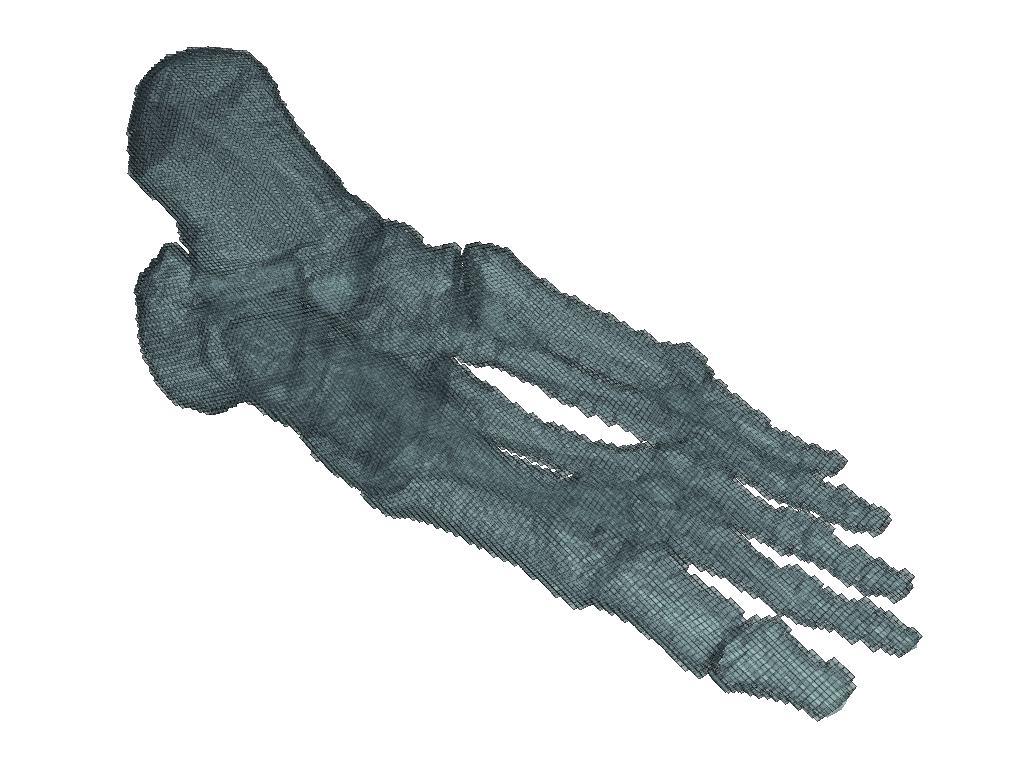Note
Go to the end to download the full example code.
Voxelize a Surface Mesh#
Create a voxel model (like legos) of a closed surface or volumetric mesh.
This example also demonstrates how to compute an implicit distance from a
bounding pyvista.PolyData surface.
cpos = [
(7.656346967151718, -9.802071079151158, -11.021236183314311),
(0.2224512272564101, -0.4594554282112895, 0.5549738359311297),
(-0.6279216753504941, -0.7513057097368635, 0.20311105371647392),
]
surface.plot(cpos=cpos, opacity=0.75)

Create a voxel model of the bounding surface
voxels = surface.voxelize()
p = pv.Plotter()
p.add_mesh(voxels, color=True, show_edges=True, opacity=0.5)
p.add_mesh(surface, color='lightblue', opacity=0.5)
p.show(cpos=cpos)

We could even add a scalar field to that new voxel model in case we wanted to create grids for modelling. In this case, let’s add a scalar field for bone density noting:
voxels['density'] = np.full(voxels.n_cells, 3.65) # g/cc
voxels
voxels.plot(scalars='density', cpos=cpos)

A constant scalar field is kind of boring, so let’s get a little fancier by added a scalar field that varies by the distance from the bounding surface.
voxels.compute_implicit_distance(surface, inplace=True)
voxels
contours = voxels.contour(6, scalars='implicit_distance')
p = pv.Plotter()
p.add_mesh(voxels, opacity=0.25, scalars='implicit_distance')
p.add_mesh(contours, opacity=0.5, scalars='implicit_distance')
p.show(cpos=cpos)

Total running time of the script: (0 minutes 1.795 seconds)